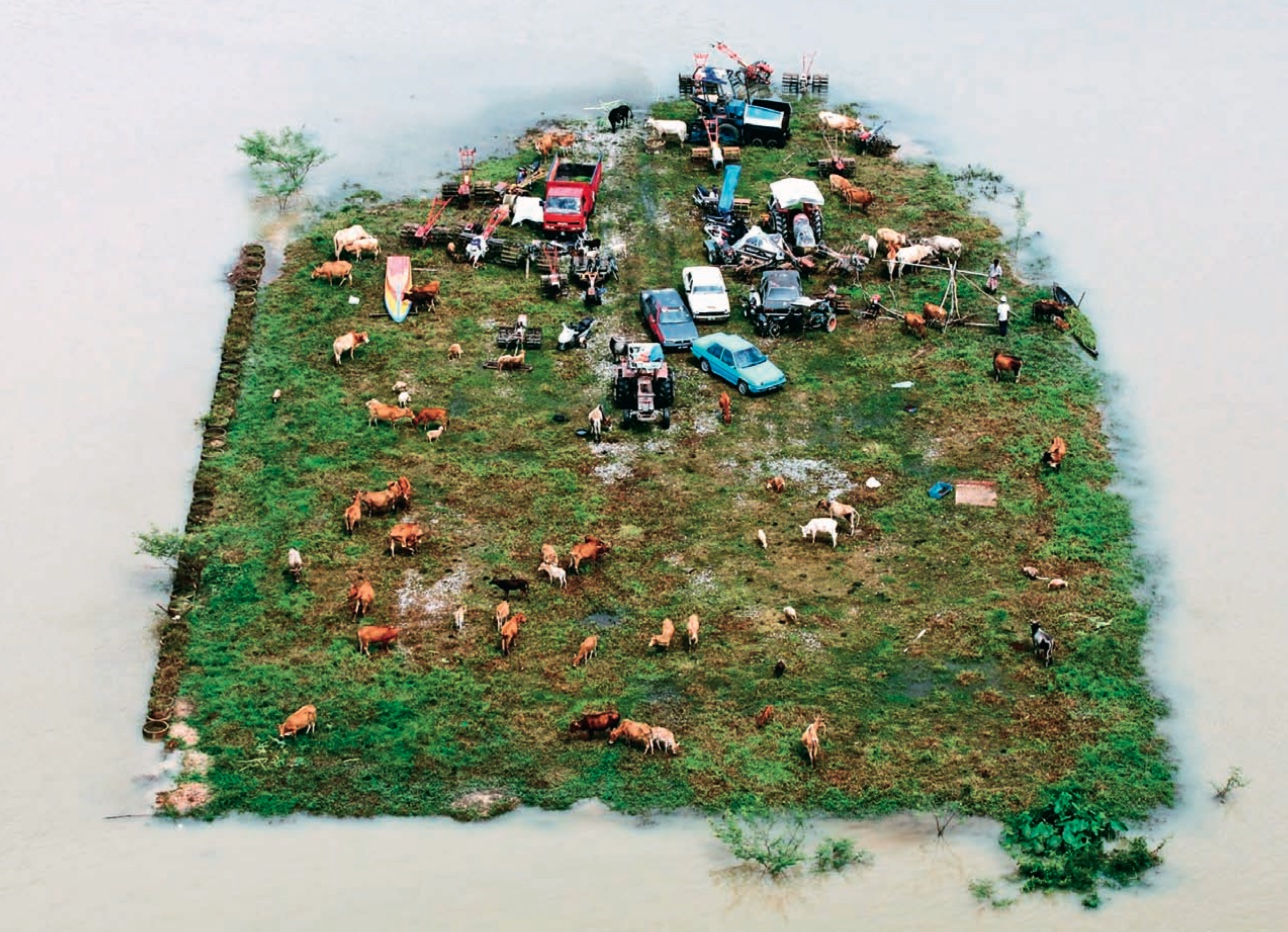They smack the face like insects on the windshield, sting the eyes like icy sleet. Whenever we open a newspaper or magazine, photographs race out to meet us, as colorful and glossy as the print process allows them to be, as direct and piercing as editorial ethics permit. Photographs that carry a piece of world events into living rooms, cool lofts, clammy trams. Opposites often mix together, everyday life and distant images form unexpected, even bewildering parallels: the steaming coffee at breakfast and a smoking car bomb, for example. The sound of the running dishwasher and the heavy flood following torrential rains. The jam-packed morning tram with the picture of an overcrowded prison. Jihad meets Tchibo — a most peculiar coincidence.
All this takes place without being asked for. For sure. Even if the act of grabbing a newspaper from the stack or of taking out a subscription is done voluntarily. It is ostensibly by accident. Perhaps. Yet no communication falls short of the consumers’ needs for long. It is drastic, but no more drastic than the contrasts of real life. This daily encounter between media noise and everyday activities plays with supply and demand, with advertising and curiosity, with desiring and receiving, with provoking and fulfilling.
We do not expect pictures of events to tell us the broad, whole truth. They can only document a tiny scrap — a fragment, a momentary click; they stimulate the nerves of the eyes to catch our attention and raise an issue, even when their realistic appearance promises much more. They follow the laws of news journalism, and so they must be loud and effective. Generally, impact is more called for than information. The extent of what can be shown — suffering, loving, living — is shifted gradually further and further, as is the proximity to the incidents and the possible complicity between events and the images connected to them.
Are we getting what we deserve in terms of press photography? Is it what we asked for? In any case, it is seldom different; outside the cultural section, in daily newspapers we rarely encounter a picture of narrative, epic depth. This picture from Reuters, published in newspapers last November, is an exception. The caption reads: “The safety of the island. Cars, tractors, cattle, goats, and people in Malaysia found security on the last piece of land to withstand the monsoon floods. They are waiting there to be rescued.” There is actually not much to see in the picture itself. A bunch of small figures dot a green area. It lacks a compelling foreground or a dynamic composition. The picture is flat and static; barely any movement can be made out. The only thing that “saves” it as a press picture is its peculiar form, the encircled green expanse that looks like a house or a church window. Surrounding it is the barely printable white or scummy beige water which envelops and encloses the area.
And yet, the picture is effective. It is concrete, datable, locatable, and it simultaneously tells a story, opens up a field, and invites exploration, thoughtful observation. Malaysia today, certainly, but also the Bible and Noah’s ark hundreds of years ago, and Pieter Bruegel at the cusp of modernity — and also as a picture of a possible future, it leaps about in the train of thought. The water rises and rises, the escape routes are cut off, the livestock is herded together. Equipment and vehicles are brought to the last safe place. Some parts of the remaining bit of land are also already white, showing signs of wetness.
Yet the imminent threat — the fact of being surrounded by rising water — collides with the image of noticeable serenity. Both animals and people appear to go about their normal activities; the cows are grazing peacefully, the humans are tending to their tools. What is happening here? Where does this trust come from, this calm? Are they counting on centuries-old experiences that the monsoon waters will not continue to rise? Or do they trust that the rescue workers will come, the promised helicopter? The cattle, in any case, do not have cell phone reception. They appear to smell that they are safe for now, that things will stay as they are.
This picture, produced by an agency, could easily be shown in a different context, in a gallery. And it would hold its own there as well, as a framed, large-scale conceptual image. It convincingly combines concrete events and temporal depth, individual and archetypal experience. And it leaves us in the dark as to whether it represents solid ground or a floating island, and whether animalistic, natural faith is still justifiable — and will not soon disappear into thin air following the click or, at the very latest, be washed away once and for all following the next monsoon. A distant overview as a contemplative, enigmatic insight: unusual — in general and for a press photograph — but also unusually successful as an image.

